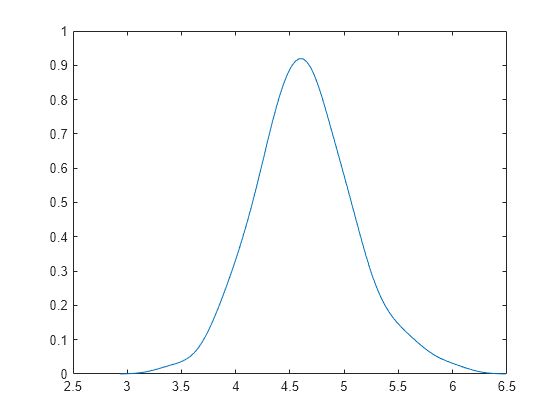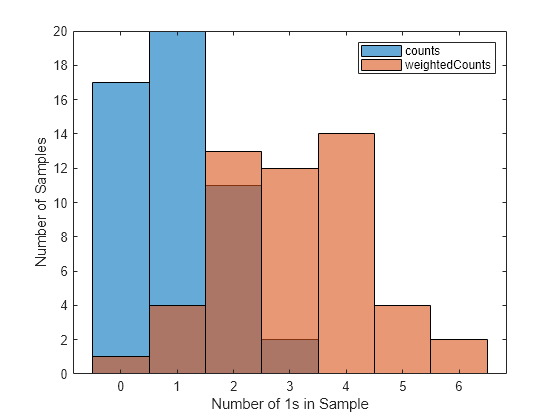bootstrp
Bootstrap sampling
Syntax
Description
bootstat = bootstrp(nboot,bootfun,d)nboot bootstrap data samples from d,
computes statistics on each sample using the function bootfun, and
returns the results in bootstat. The bootstrp
function creates each bootstrap sample by sampling with replacement from the rows of
d. Each row of the output argument bootstat
contains the results of applying bootfun to one bootstrap
sample.
bootstat = bootstrp(nboot,bootfun,d1,...,dN)nboot bootstrap samples from the data in
dl,...,dN. The nonscalar data arguments in dl,...,dN
must have the same number of rows, n. The bootstrp
function creates each bootstrap sample by sampling with replacement from the indices
1:n and selecting the corresponding rows of the nonscalar
dl,...,dN. The function passes the sample of nonscalar data and the
unchanged scalar data arguments in dl,...,dN to
bootfun.
bootstat = bootstrp(___,Name,Value)
[
also returns bootstat,bootsam] = bootstrp(___)bootsam, an
n-by-nboot matrix of bootstrap sample indices,
where n is the number of rows in the original, nonscalar data. Each
column in bootsam corresponds to one bootstrap sample and contains the
row indices of the values drawn from the nonscalar data to create that sample.
To get the bootstrap sample indices without applying a function to the samples, set
bootfun to empty ([]).
Examples
Input Arguments
Name-Value Arguments
Output Arguments
Tips
Extended Capabilities
Version History
Introduced before R2006a
See Also
histogram | bootci | ksdensity | parfor | random | randsample | RandStream | statget | statset




